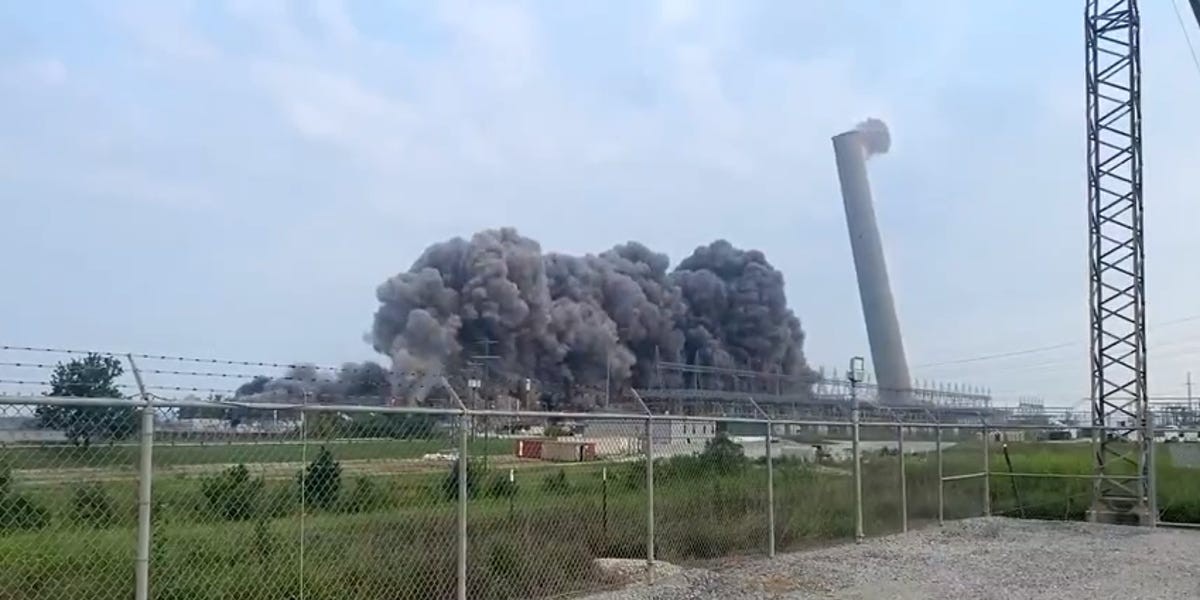
A coal plant in South Texas will shut down and convert to a solar + battery electricity generation facility, with the help of a $1.4 billion grant from the US Department of Agriculture meant to help clean energy while saving rural jobs.
The grant will go to San Miguel Electric Cooperative Inc (SMECI) headquartered in Atascosa County, Texas, south of San Antonio, and serving 340,000 customers 47 South Texas counties.
SMECI has operated a mine mouth lignite-fired coal plant (named due to its proximity to the mine that supplies it) since 1982. The plant is in the town of Christine, Texas, population 337.
But that coal-fired plant is one of the dirtiest in Texas. It’s the fourth-largest mercury polluter in the state, producing around 12 times as much mercury as is allowed by a new EPA rule.
It also has two coal ash ponds on site which leech into the local water table and create some of the most contaminated groundwater in the country. Here’s a passage from a 2022 Earthjustice report which analyzed contamination from coal plants:
Numerous constituents were found in concentrations exceeding relevant thresholds from the outset of monitoring in 2018—in wells both up- and downgradient from CCR units. These constituents include arsenic (up to 7 times the Maximum Contamination Level (MCL)), beryllium (up to 112 times the MCL), boron (up to 28 times its 10-day child health advisory), cadmium (up to 83 times the MCL), cobalt (up to 360 times its default GWPS in the CCR Rule), lithium (up to 82 times its default GWPS), selenium (up to 16 times the MCL), and radium (up to 6 times the MCL).
–Poisonous Coverup, The Widespread Failure of the Power Industry to Clean Up Coal Ash Dumps, Earthjustice, 2022
In particular, note that the coal plant resulted in 360x as much cobalt as is allowed in the groundwater protection standard – an element that people often associate with electric car batteries, but is also present in many fossil fueled applications (oil refining, for one).
So, moving away from this coal plant and to a cleaner option would definitely be a big win, given what an environmental stain it is on the area.
In September, SMECI was chosen as a finalist for a new USDA “Empowering Rural America” grant, and this week, was officially selected as one of the sites to receive part of grant, alongside 9 others. SMECI received the largest chunk of the $4.37 billion total, with other sites mostly getting grants in the hundreds of millions.
In total, the grants will support 5,000 jobs and reduced climate pollution by 11 million tons per year, according to the USDA. SMECI’s grant will reduce climate pollution by 1.8 million tons, as much removing 446,000 cars from the road, and support around 600 jobs.
The grant money will be used to convert the plant away from coal power and replace it with solar and battery storage. Solar is an abundant resource in sunny South Texas, and the plant already has grid connections to make this an easier drop-in than having to run new transmission lines.
But not only that, the site’s capacity will see a significant upgrade. The current coal plant can produce up to 410 megawatts of power, but the upcoming solar plant will be capable of 600 MW – nearly half again as much as its previous capacity.
And pairing this solar power with grid-tied batteries will help to make the grid more resilient, too. Thermal power plants tend to take time to turn off and on, meaning it’s harder to manage unexpected peaks and troughs in electricity demand – plus, equipment at the plants tends to wear when it heats up and cools down a lot, contributing to the high costs of coal power. There have been numerous studies showing that new solar plants are cheaper than old coal – and that’s even ignoring externalities.
While solar power is often considered intermittent – you are at the mercy of the sun, after all – batteries can solve that problem. These batteries can help to smooth out peaks and troughs in generation and demand, and can be dispatched to the grid within milliseconds, to better match supply with demand. They can also be used for energy arbitrage, by charging when supply is abundant and discharging when demand is high.
While there’s no announced timeline yet for exactly when the plant will complete its transition, SMECI will develop a Community Benefits Plan over the course of the next year as a provision of the grant process.
Once this transition is completed, Texas will be left with 14 coal plants. In 2023, Texas generated 71GWh of electricity through coal, down from a peak of 157GWh in 2011. Electricity generation in the state was 37.2% coal in 2000, and just 13.1% in 2023.
And if you want to make the transition to solar on your own personal level, why not install some on your roof? To make sure you find a trusted, reliable solar installer near you that offers competitive pricing, check out EnergySage, a free service that makes it easy for you to go solar. It has hundreds of pre-vetted solar installers competing for your business, ensuring you get high-quality solutions and save 20-30% compared to going it alone. Plus, it’s free to use, and you won’t get sales calls until you select an installer and share your phone number with them.
Your personalized solar quotes are easy to compare online and you’ll get access to unbiased Energy Advisors to help you every step of the way. Get started here. – ad*
